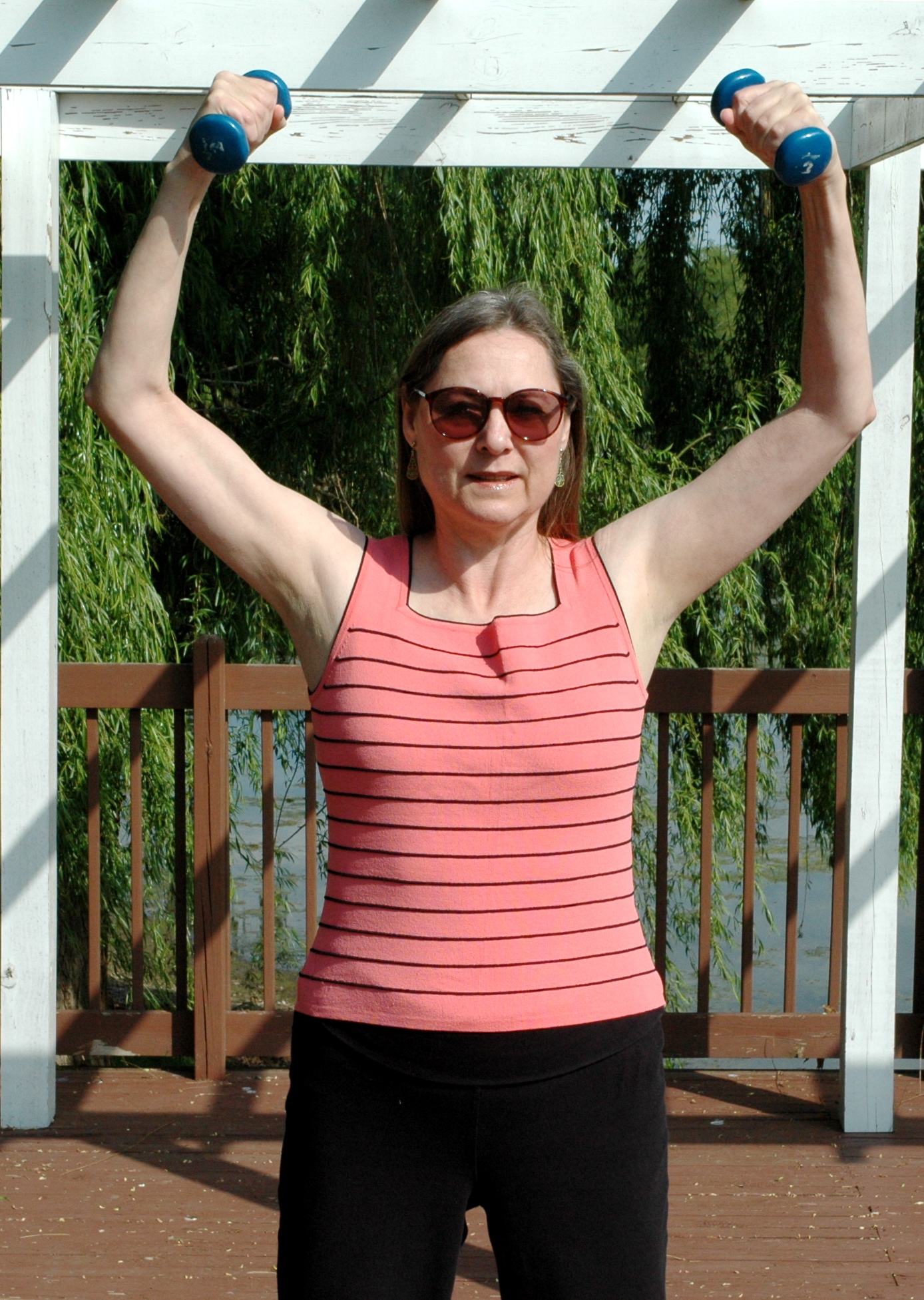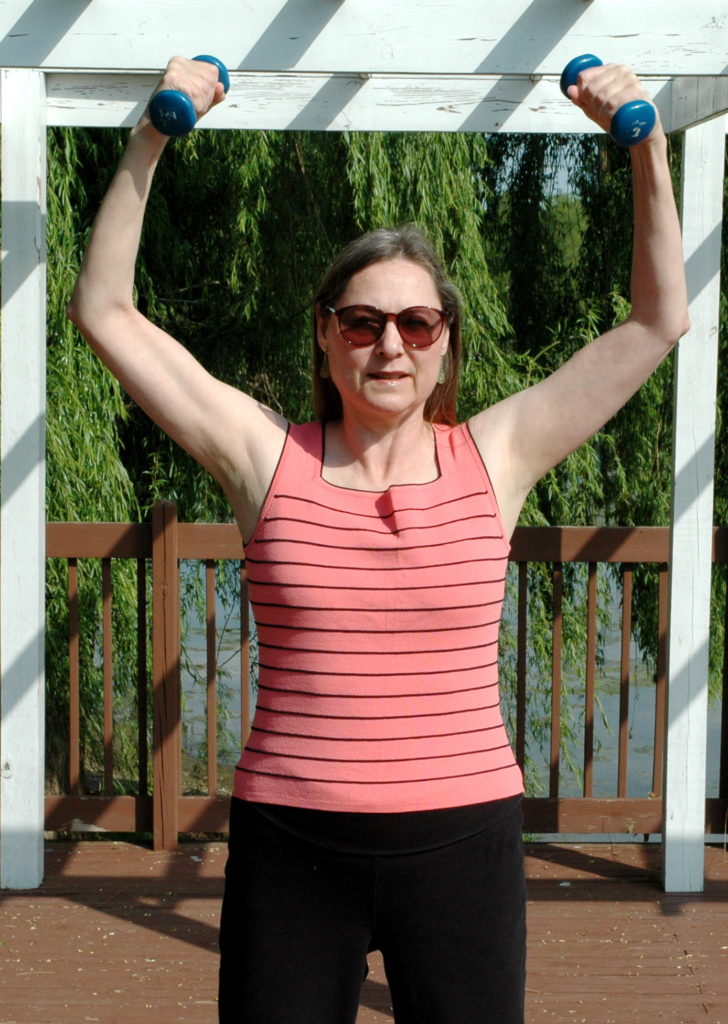Trust me on this: exercise is important.

I apologize in advance for the length of this post–I know you’re busy and often exhausted, so I’m trying to keep my posts to around 300-500 words (no more than five minutes of your time). My “inspiring-people” posts run 800-1000 words (ten to fifteen minutes of your time), because I believe these people deserve a little attention.
This post will take fifteen minutes to read, and will require some thought and planning on your part–and, some time to incorporate exercising into your schedule (remember to talk to your doctor about exercising).
There’s no quick and easy way to explain how a person gets stronger and becomes healthier while living with fibromyalgia–it’s a little complicated; but for me, the results really were worth the time and effort.
Exercise is one of the factors which is proven to help people with fibromyalgia feel better. It must, however be appropriate exercise, not too little and not too much.
It took me a while to realize how important this balance is. I just couldn’t believe that the eensy-weensy baby amount of activity I was able to do, without causing a huge flare-up, could possibly make a difference. So I did more than my body could tolerate, which repeatedly wrecked me.
How could a five minute walk, three times a week, have a positive outcome for my health? They tell us we have to do cardio for twenty-minutes minimum? (Duh, the reason it helped is because I was working toward the twenty-minute minimum–which was a goal, not a starting point. Why couldn’t I see that?)
I probably didn’t want to acknowledge that they are talking to normal, healthy bodies, and mine is not one of those. Now, I’m the only one who can determine what my body is saying. Like it or not–the best advice for people with fibromyalgia is–
Listen to your own body.
To manage fibromyalgia, I had to learn a new skill. My body was telling me to be ridiculously gentle with it; and honestly, I didn’t want to hear it. I don’t want to be a wimp!
Also, I was constantly getting messages from advertisers, gurus, and control-freaks that I ought to listen to them, not to myself. And I’m a nice person; it makes me feel good to give other people what they want.
My body, however, would disagree about whether it feels good to be a people-pleaser. My body knows when I’m neglecting it, and my body tells me I shouldn’t even consider satisfying the whims of pushy people who don’t care if I’m neglecting my body, as long as they get what they want from me.
When I finally got the hang of listening to the real expert on my body,
my body told me where to begin: by walking for five minutes, every other day. Not a race walk–just a normal walk. After two weeks, I started walking every day, five minutes. After two more weeks, I walked seven minutes.
This two week time-lag between increases, was only a useful measure if I was not overworking and taking on too much activity everywhere else in my life.
After I started at my base point, and increased my activity from there, the positive results were immediate. But, they were hard to notice because they were small. Gradually, the results became more noticeable. After a while, it became possible for me to lose weight. That required conscious effort, but was doable. It’s not possible to lose weight in a healthy manner unless you’re also exercising. But it’s not possible to keep exercising, if you’re going at it too hard. It’s a conundrum, so be careful.
In all, it took about three years to get to my present level of fitness (and I’m still improving). Now, some people say they envy me (which proves that envy is always misplaced–who would want to deal with fibromyalgia?)
So save yourself a lot of grief, and start listening to your body now. Your body knows best for you.
What’s your endurance base point? Mine was zero. I had no endurance. I couldn’t walk up a flight of stairs without resting; I couldn’t do routine grocery shopping without an electric cart. If that’s where you’re at, then your endurance base point is 0.
However much exercise you are doing now, if you’re able to do it on a regular basis, that’s your base point. Find yours on the list below, and gradually increase activity from there.
- Walk five minutes every other day. When you’re strong enough, increase to:
- Walk five minutes every day, then, after you can do that without much effort;
- Walk seven minutes every day, then;
- Walk ten minutes every day;
- Walk ten minutes every day + every other day, do two minutes of strength exercises;
- On the days you don’t do strength exercises, walk for twelve-fifteen minutes;
- Don’t increase walking, but add a minute to strengthening;
- Alternate increasing walking with increasing strengthening….
How often to increase and how much?
I always hold constant in the amount of exercise for at least two weeks before increasing (number of reps, number of exercises, length of time spent exercising, level of difficulty)–and then, I only increase by an eensy-weensy bit. Sometimes I hold steady for a month or more.
I don’t necessarily increase activity after two weeks–too weeks is the bare minimum between increases.
I increase only when I feel more energetic for at least a whole week (seven days in a row), never in response to one isolated good day, and never when I’m flaring.
Going to the mall, by the way, is “activity,” as is going out for lunch, making dinner, and doing the laundry. I learned to count all my “activity” as active time, and balance each active period with a time-out for resting. Some of my former activity had to be cut out to make it possible for me to exercise, because exercising really HAS TO BE among my highest priorities.
The fact that I wasn’t any good at listening to my body might be one of the contributing factors to the severity of my fibromyalgia in the first place.
I discovered it was best, at first, to exercise in the late afternoon, because from five to eight hours after I exercised, I was so exhausted that I couldn’t keep my eyes open. A neurologist confirmed for me that this is common–so find out if it’s true for you. Keep a health journal (watch for my post on that, coming soon).
Be patient. Take it slow and easy.
But to get where you want to go, you have to start walking.
*****
Disclaimer: Unfortunately, there are people in this world who force me to disclaim what most of you already know, SO HERE’S THE MUMBO JUMBO: This blog is not medical or therapeutic advice, and is not intended as advice. This blog and its posts are intended only to provide a general, nonspecific illustration of how I, a person with fibromyalgia, have become more physically active. This web site and these articles are not intended to provide comprehensive or full coverage of all the issues related to fibromyalgia and/or exercise. Your specific health and situation may make outcomes different than what you anticipate. You should consult with a medical professional who is familiar with your health and your situation, to determine whether these exercises are appropriate for you. You should only do these exercises after a qualified medical professional has approved for you to do them.
